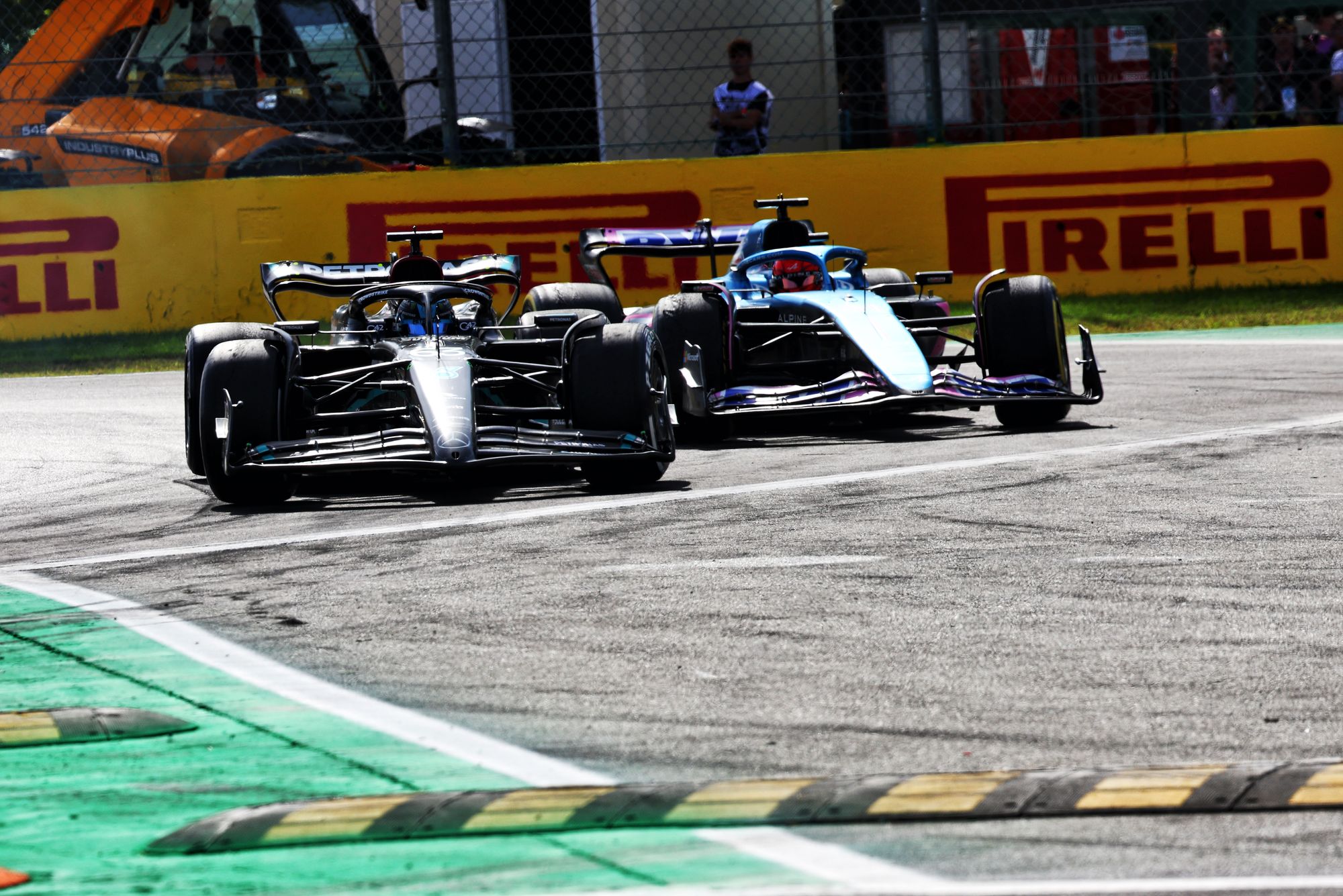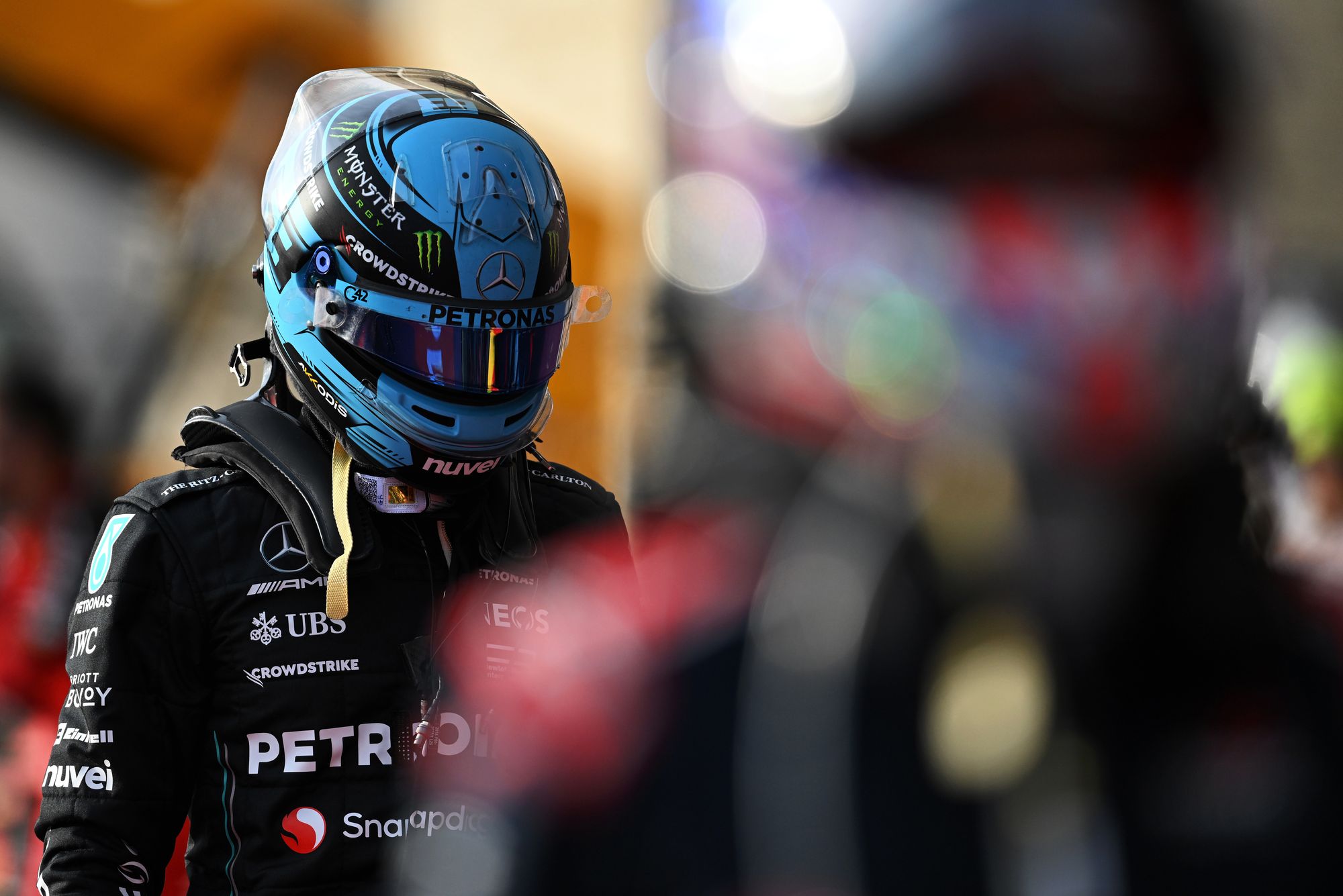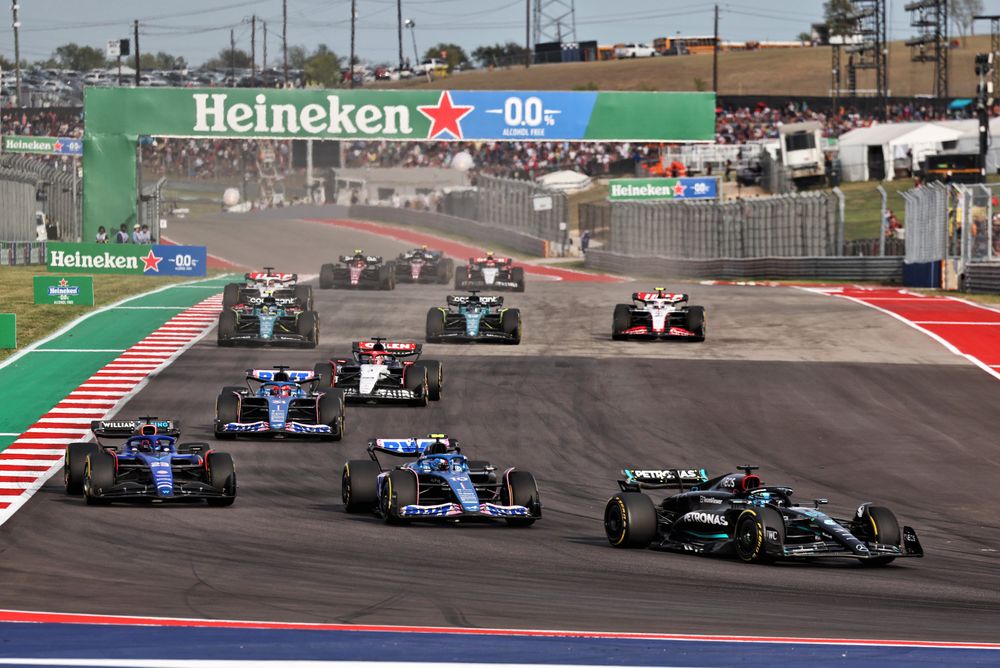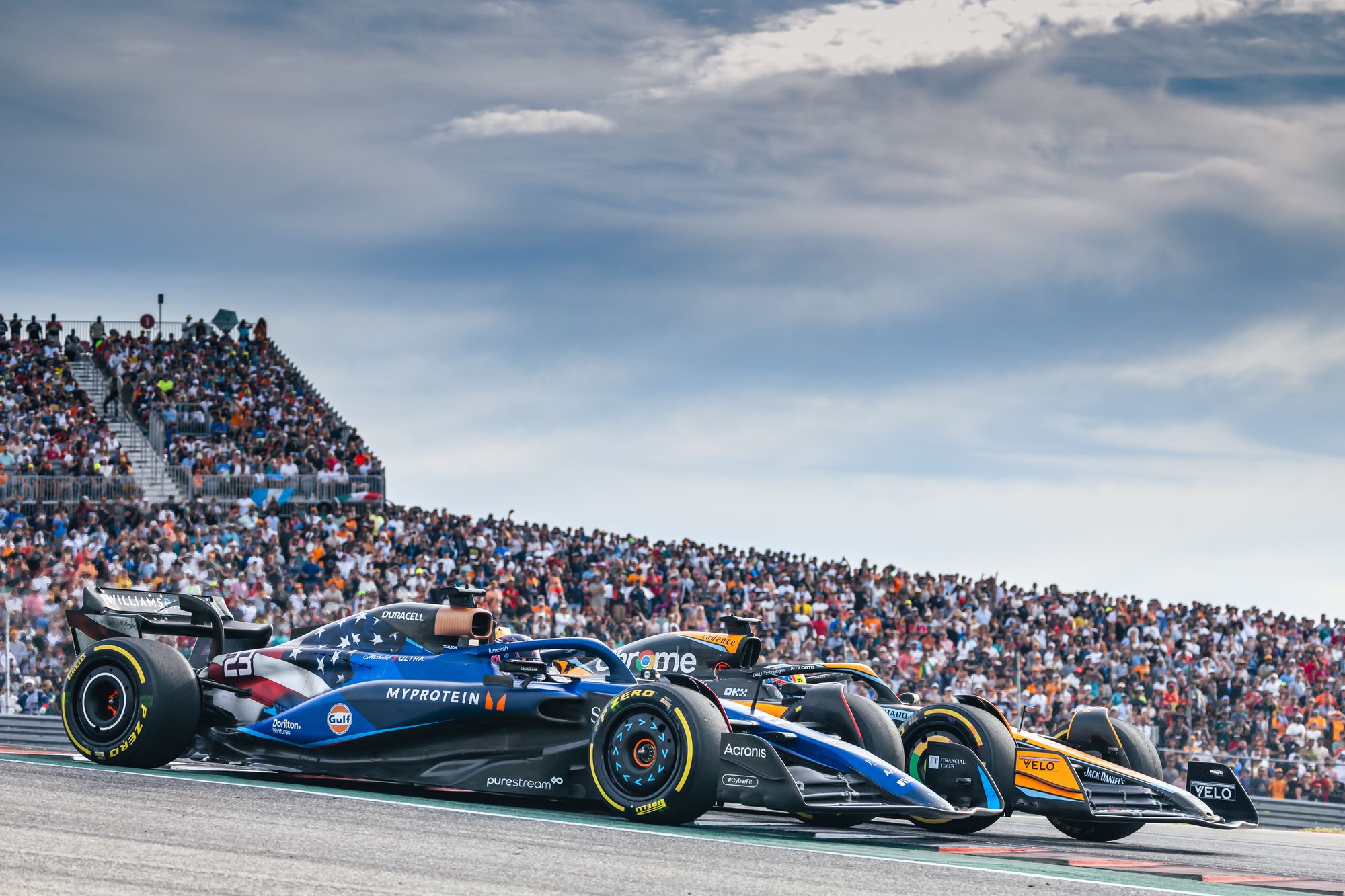Up Next

Formula 1 drivers are becoming increasingly frustrated with the way track limits are policed, particularly when it comes to overtaking moves that are completed by leaving the track. George Russell, a repeat offender this year, is calling for a change to eliminate what he calls a “get out of jail free card”.
Russell’s overtaking move on Oscar Piastri at Turn 15 during the United States Grand Prix sprint race drew criticism from the McLaren driver and, in particular, his team-mate Lando Norris.
Certainly, Russell appeared to have little intention of not leaving the track and got the power down aggressively in the exit phase of the corner in order to make the move. The concern is that the five-second penalty awarded in such incidents is insufficient and encourages premeditated moves.
Russell has clearly taken a leaf out of Fernando Alonso’s book and is capitalising on this. Having regularly pushed back against this being permitted, it’s clear that he doesn’t like it but has to go along with it - and that means taking advantage of the way the rules are policed as any professional driver would.
A bold but ultimately costly move from George Russell
— Formula 1 (@F1) October 22, 2023
The five-second penalty saw him eventually finish in eighth place #F1Sprint #USGP pic.twitter.com/QIy1sQMKj8
“If there’s gravel there and someone pushes you wide, you're going to end up in the gravel so you're not really planning to go there, where I was always intending to go around the outside, hoping that he would leave me a bit of space, and if he didn't it would just push me wide onto a bit of Tarmac and you just sort of worry about the consequences after,” said Russell when asked by The Race if he felt forced to capitalise on the way the rules are enforced and make moves such as the one on Piastri in Austin.
“I don't enjoy racing like that and something does need to change. It's only probably three circuits out of the whole season where it's like that.”
While Russell frames it as knowing he has an escape route, the way he executed the Piastri attack - much to the McLaren driver’s surprise - suggested it was premeditated. There’s nothing wrong with him doing that if that’s the way the rules are being policed, and as with Alonso’s antics in 2021 it serves to highlight the way the rules are enforced isn’t fit for purpose.
The Race also put it to him that after Russell apparently pushed hard in the drivers’ briefing in Spain to change the way these offences are policed, he has three times capitalised on the current situation.
The first was at the start in Spain where he attacked around the outside of the first corner and took to the runoff. The rules permitted that as long as he rejoined in the allotted place, having not gained ground. But of course, that doesn’t factor in ground gained to high-risk car positioning.
He then attacked Esteban Ocon at the first chicane at Monza after exiting the pits, copping a five-second penalty after showing no interest in dropping back behind. This was felt to be a net gain for his race, not only because it limited time loss behind Ocon but also reduced the chances of working fresh tyres too hard, which can accelerate the degradation.

The Austin move was the third example. Although it did ultimately cost him a place in the sprint race result, relegating him to eighth behind Pierre Gasly in the final classification, he opted against dropping back behind Piastri.
“At the end of the day we’re all racing to the same rules,” said Russell.
“If you're racing at Monaco you can't go beyond the limit because you'll end up in the wall, whereas in Japan you can't go over the limit because you end up in the gravel, whereas here your only consequence is running off onto a bit of Tarmac.
“And Monza, [for] example, coming out of the pits, I went over the limit knowing that I've got a get out of jail free card.
“And the same in Barcelona. You don't want to have a get out of jail free card, so the FIA need to find a way to avoid that.”
Russell suggested that rather than increasing the time penalty, drivers have floated that “potentially a position penalty is more” punitive.
That’s a logical suggestion. It returns the race as closely as possible to the state it was prior to the offence, and means drivers can no longer ‘spend’ penalties because they feel it will be a net gain to serve a five-second penalty but get ahead of a rival more quickly.

Russell is far from the only driver who is frustrated. It’s clear that changes need to be made at circuits where an advantage can be taken, and the methodology of having to drop back behind whoever you passed is logical.
The one caveat is that last year race control stopped advising teams to do this to avoid penalties. The idea is that it’s up to the drivers and teams to make a choice and if not they get a penalty, but the trouble is the penalty isn’t big enough.
There are details that would need to be ironed out about a return to ceding positions but it’s the best way to avoid the strategic taking of penalties that makes a mockery of racing.






